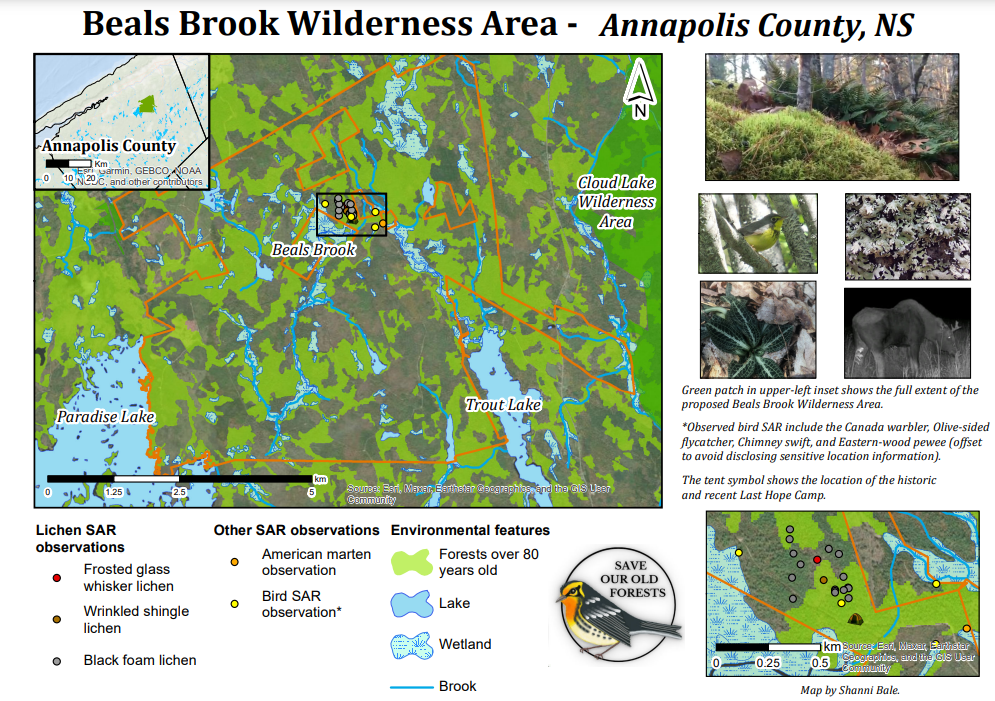Beals Brook :
The Last Hope Camp and the proposed Beals Brook Wilderness Area
Twenty years ago, when Bowater Mersey owned the area and was clearcutting extensively, a local farmer and trapper persuaded them to spare the 24 hectare forest just to the west of Beals Brook because the trees weren’t worth much as lumber but they were essential to wildlife. Bowater agreed.
The surviving intact mature to old forests provide connectivity between extensive stretches of wetland. These wetlands – Crisp Bog, McEwan Meadow, Beals Meadow, the Wet Meadow – are fed by and feed into a complex array of streams and lakes, all eventually emptying into the Annapolis River. The central area of the proposed protected area, to the north of Snowshoe Lake, can only be accessed by canoe and that involves a fair amount of portaging.
A rare area of old forest unbroken by logging roads exists between Beals Brook and McEwen Lake. This includes a magnificent stand of Sugar Maple approximately 120 years in age. Another band of larger, older trees exists to the west of Beals Brook and the old stagecoach road that now leads north to Inglisville Road. These include many large Red Oak, the biggest being 91cm DBH (diameter at breast height), as well as large Red Spruce and Beech. Old trees, notably Red Maple, persist in some of the many wooded wetlands. Much of the rest of the intact forest in the proposed area is mature at best and less than magnificent, as a result of a wildfire that came through the area 80 years ago as well as the generally poor, acidic soil.
If it wasn’t for the gallant efforts of a group of citizens who camped out here from December 2, 2021 until June 22, 2022 (202 days!), this vital, biodiverse old forest would have been lost to the harvesters’ blades.
More on their story and the proposed Beals Brook Wilderness Area here.
For more information, contact or follow Save Our Old Forests (SOOF)
For more information, contact or follow Save Our Old Forests (SOOF)

